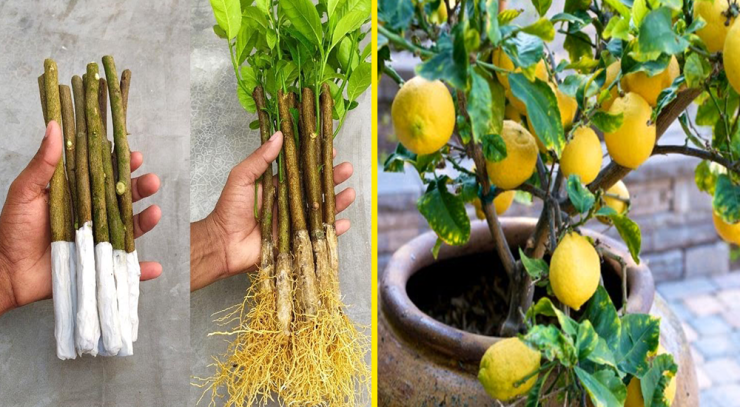Lemon trees are a delightful addition to any garden. Their fragrant blossoms and tangy fruits can brighten up your space and provide you with an endless supply of lemons for culinary and beverage delights. One cost-effective and straightforward way to grow a lemon tree is by propagating it from cuttings with tissue paper. In this step-by-step guide, we’ll walk you through the process.
Materials You’ll Need:
Lemon Tree Cuttings: Choose healthy, disease-free lemon tree branches for your cuttings. Aim for branches that are about 6-8 inches long.
Tissue Paper: Standard tissue paper works best for this method. You’ll need a few sheets.
Rooting Hormone: This will help stimulate root growth. You can find it at a garden center or order it online.
Small Pots: You’ll need pots for planting your cuttings.
Potting Mix: A well-draining mix suitable for citrus trees.
Plastic Bags: Large, clear plastic bags will help create a mini-greenhouse environment for your cuttings.
Rubber Bands: To secure the tissue paper around the cuttings.
Step 1
Taking Cuttings
Choose branches that have a few leaves and cut them into 6-8 inch sections. Make clean cuts just below a leaf node.
Remove excess leaves and twigs, leaving a couple of leaves at the top of each cutting.
Step 2.
Preparing the Cuttings
Dip the cut ends of the branches into rooting hormone to encourage root growth.
Step 3.
Wrapping in Tissue Paper
Dampen a sheet of tissue paper without making it soaking wet.
Wrap the tissue paper around the cuttings to cover the leafy part and secure it with rubber bands.
Step 4.
Planting the Cuttings
Fill small pots with well-draining potting mix.
Make a hole in the center and insert the wrapped cuttings.
Step 5.
Creating a Mini-Greenhouse
Place the potted cuttings inside large, clear plastic bags. Blow some air into the bags and seal them to create a mini-greenhouse effect.
Put the bags in a bright, indirect sunlight location. Avoid direct sun, which can overheat the cuttings.
Step 6.
Caring for Your Cuttings
Check the moisture level regularly. The soil should be kept slightly damp, but not waterlogged.
After about 6-8 weeks, you can remove the bags once your cuttings show signs of new growth.
Step 7.
Transplanting Your Lemon Trees
Once your lemon tree cuttings have grown several inches and have healthy roots, you can transplant them into larger pots or directly into your garden.
Continue to care for them as you would with mature lemon trees, providing adequate water, sunlight, and nutrients.
Keep in mind that lemon trees are generally grown from grafted rootstocks for faster fruiting. Propagating from cuttings might take longer to produce fruits, but it’s a rewarding way to grow lemon trees from scratch and experiment with different lemon varieties. Happy propagating!






Add comment